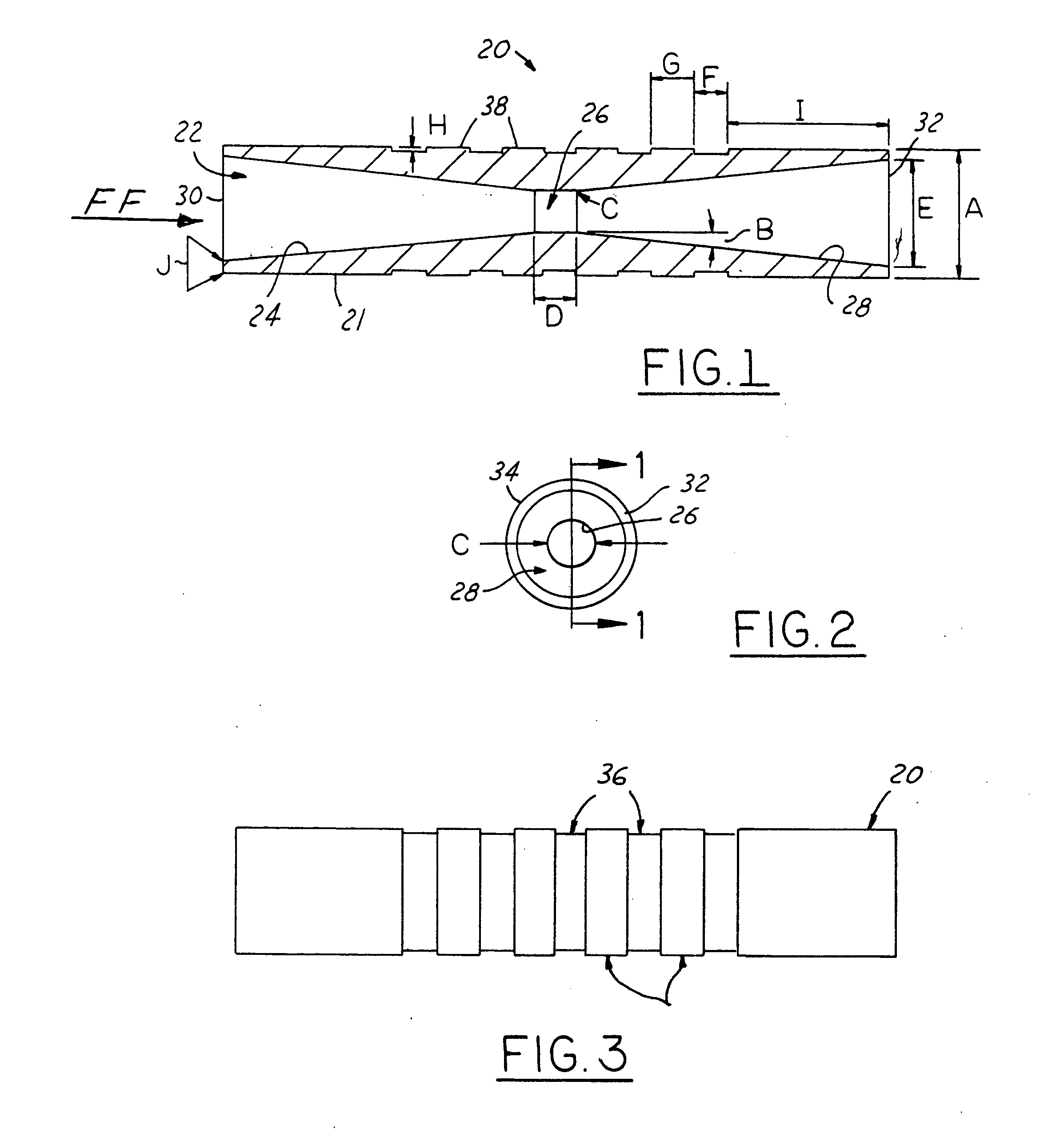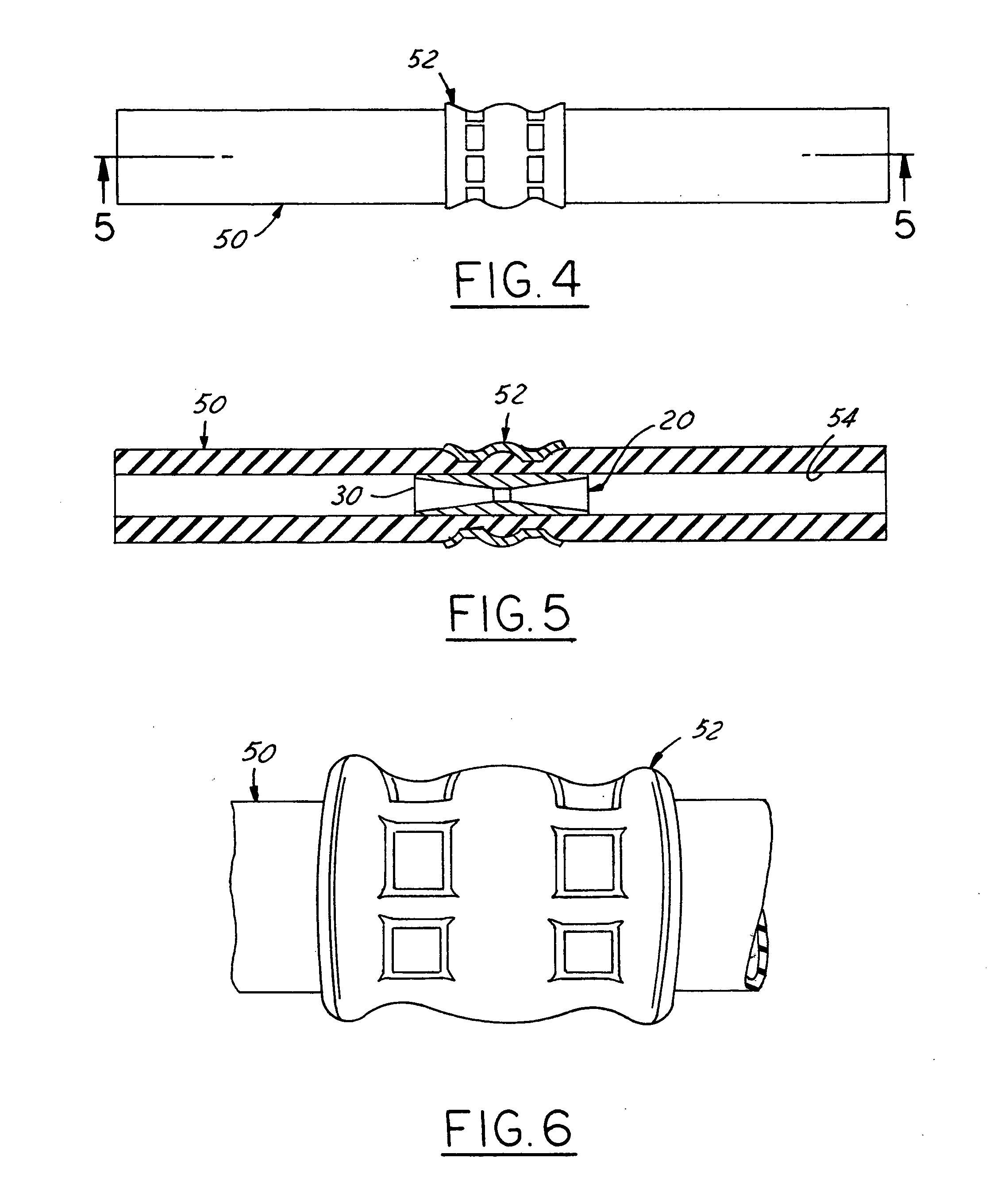Method and apparatus for reduction of fluid-borne noise in hydraulic systems
a technology of hydraulic system and fluid-borne noise, which is applied in the direction of liquid/fluent solid measurement, volume/mass flow by differential pressure, instruments, etc., can solve the problems of objectionable acoustic noise, hydraulic system fluid-borne noise is commonly present, mechanical apparatus, hydraulic lines, etc., to reduce or eliminate noise, minimize or eliminate turbulence
- Summary
- Abstract
- Description
- Claims
- Application Information
AI Technical Summary
Benefits of technology
Problems solved by technology
Method used
Image
Examples
Embodiment Construction
[0021]FIGS. 1 and 2 illustrate a power steering system restrictor 20 constructed in accordance with a presently preferred first embodiment of the invention. The direction of fluid flow through restrictor 20 is indicated by the arrow FF in FIG. 1. Various dimensional parameters are designated by the dimensional lines and arrows labeled “A through J” and are tabulated hereinafter by way of a working example.
[0022] Restrictor 20 generally comprises a tubular metallic body having a cylindrical exterior surface 21 with an outside diameter (O.D. dimension) designated by reference character “A” in FIG. 1. Resrictor 20 has a central flow-through passage 22 open at its opposite axial ends and constructed in the form of a venturi passage as defined by a shallow tapered inlet passage 24, a relatively short length constant diameter throat passage 26, and a shallow tapered outlet passage 28. Preferably the cross sectional configuration of the interior of the restrictor, as defined by passage se...
PUM
 Login to View More
Login to View More Abstract
Description
Claims
Application Information
 Login to View More
Login to View More - R&D
- Intellectual Property
- Life Sciences
- Materials
- Tech Scout
- Unparalleled Data Quality
- Higher Quality Content
- 60% Fewer Hallucinations
Browse by: Latest US Patents, China's latest patents, Technical Efficacy Thesaurus, Application Domain, Technology Topic, Popular Technical Reports.
© 2025 PatSnap. All rights reserved.Legal|Privacy policy|Modern Slavery Act Transparency Statement|Sitemap|About US| Contact US: help@patsnap.com



